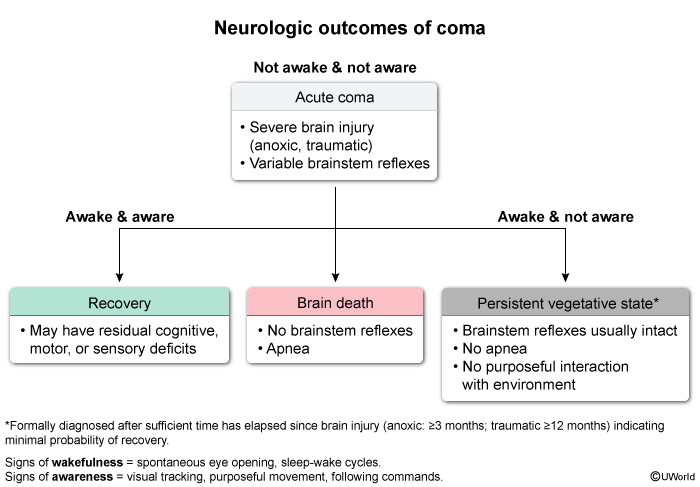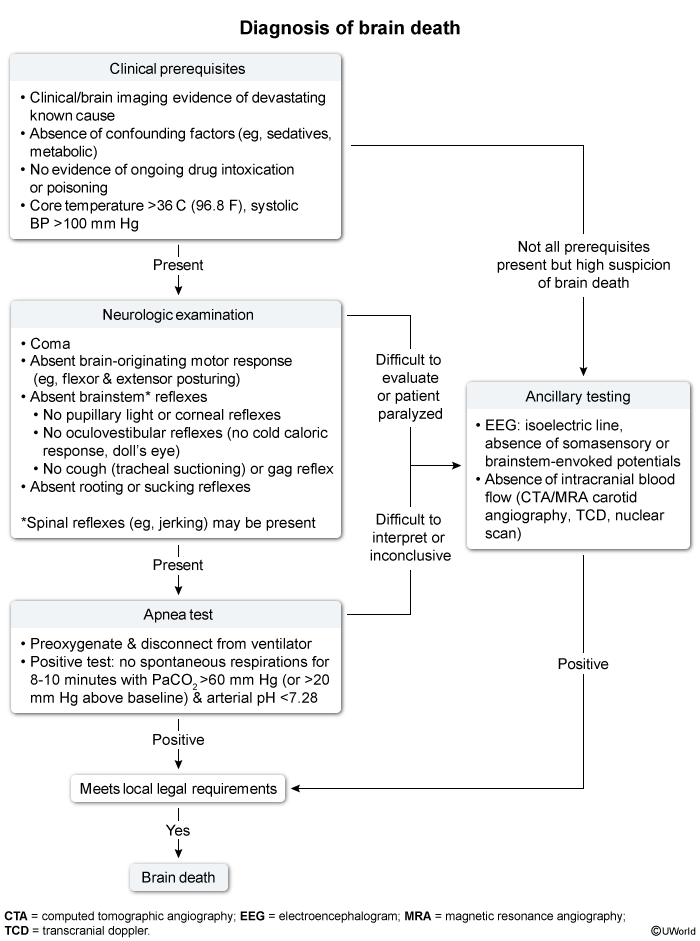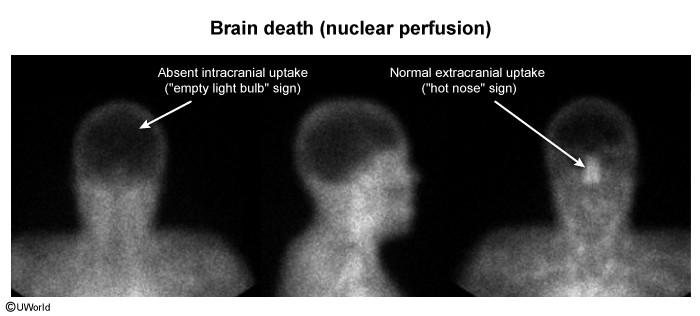Brain Death
Article Sections
Introduction
Brain and cardiac death are 2 legally acceptable definitions of death in the United States.
- Brain death: The heart keeps beating, but there is complete cessation of whole brain activity, including cortex (ie, coma) and brainstem (ie, apnea, cranial nerve areflexia).
- Cardiac death: The heart stops beating (ie, asystole).
This article focuses on brain death.
Pathogenesis
Any catastrophic neurologic event that leads to coma could potentially progress to brain death.
EtiologiesThe most common etiologies are:
- Anoxic brain injury (eg, prolonged cardiac or respiratory arrest)
- Traumatic brain injury (eg, motorcycle collision)
- Neurovascular accidents (eg, large subarachnoid hemorrhage)
- Toxic-metabolic encephalopathy (eg, severe carbon monoxide poisoning)
Massive neurologic catastrophes are described by alteration in:
- Wakefulness: generated by the reticular activating system (ie, brainstem)
Continue Learning with UWorld
Get the full Brain Death article plus rich visuals, real-world cases, and in-depth insights from medical experts, all available through the UWorld Medical Library.
Figures

Figure 1

Figure 2

Figure 3
Tables
Table 1
Table 2